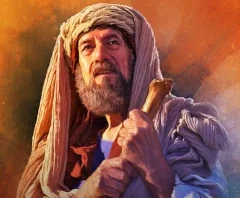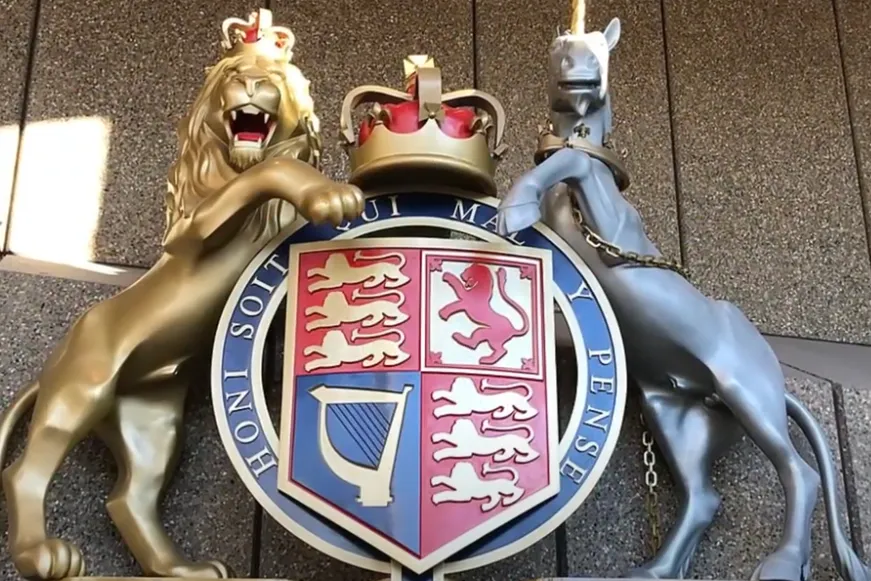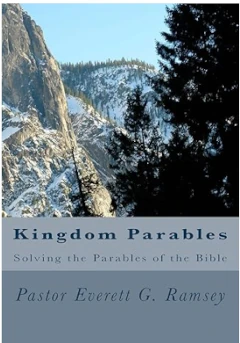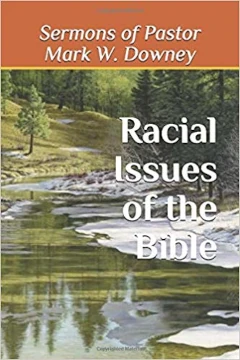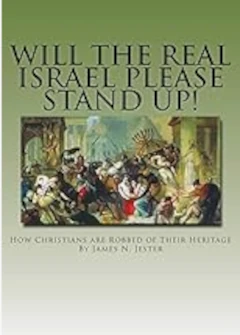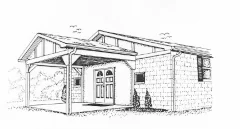The Death of our Saviour, Part 2
By Pastor Don Elmore
He was born on a farm in England. Seeking adventure he journeyed to Vienna and joined a company of cavalry fighting the Turks. His natural talents as a soldier were early recognized and he was promoted to captain of company of 250 men. At that time the Christian armies were fighting the Mohammedan armies at the very gates of Vienna in the heart of Europe.
The champion fighter of all the Turkish armies challenged the champion of the Christian armies to single combat. He was chosen to represent the Christians.
Meeting on level ground, the two champions spurred their horses at each other, his lance passed through the head of his Saracen opponent. Quickly severing the Turk’s head, he rode from the battlefield with the grisly trophy held high on the point of his lance.
The next day another challenge was made by the second best Saracen champion. He met the new challenger on the same ground. Spears were broken on the first pass. He then drew his pistol and fired, breaking the rein arm of the Turk which caused his horse to lurch, throwing him from the saddle. He quickly dispatched him, and for a second time carried the head of his opponent from the battlefield.
The third day yet another challenge was made by the third best of the Saracen warriors. This time it was a close thing. Spears were broken. His battle axe was knocked from his hand. As the Saracen champion raised his axe to finish him off, he quickly drew his dagger and thrust it under the Saracen’s raised arm where the armor joined, killing him instantly. For the third time he rode from the field with the head of his foe. The three best warriors of the entire Muslim army had been vanquished by a single Christian champion in three successive days. He was the hero of the Christian armies. The king presented him with a coat-of-arms appropriately emblazoned with three Saracen heads.
Soon after there was a terrific battle between the opposing armies. In the melee he was knocked unconscious and fell under a pile of bodies. He was later found by Saracen looters, made a prisoner, and taken to Constantinople and sold as a slave. A Turk bought him and took him to the far side of the Black Sea, a long way from the war in Austria. The master was brutal. He took a wooden pole close to hand and smashed in his skull. Making his way northward to Russia, iron slave collar and all, he was passed from one friendly hand to another until he had made his escape back to his regiment where he was given a hero’s welcome.
Deciding that he needed a rest after the rigors of fighting and slavery, he asked for, and received, his discharge. He was awarded a large bag of gold for his services.
His ship to England was attacked by pirates. The vigorous defense of the ship’s crew and passengers enabled the ship’s captain to capture several of the pirate ships. These captured ships brought a fine price when sold in Italy.
Leaving his ship, he continued his journey by foot. He walked the length of Italy, across southern France, and through Spain…. Arriving in England after having seen much of the known world, he heard about some sort of adventure getting underway having to do with a settlement in far off Virginia. Quickly bored with the quiet English countryside, he joined the venture.
He came to Virginia in 1606 and went back to England in 1613.
Captain John Smith.
Are you surprised at all the heroics of Captain John Smith? Let’s look at some scripture which may teach a different kind of passion for our Redeemer.
- He died at Passover; not at Easter.
- He was the Lamb of God; not the Ham of God.
- He was crucified for His people; not for every one of every race.
- He was crucified in the orchard on the southern summit of the Mount of Olives to the east of the Temple; not on the western side—Church of the Holy Sepulcher
- He was butchered with small flint stones for almost six hours—most marred man; not the small bleeding of the crucifix
- Was he crucified with three crosses put in holes with Him being in the middle?
One of the greatest “secrets” associated with Golgotha concerns the manner in which Christ was crucified. Almost everyone for the past 1600 years has imagined that Christ was martyred on either a Roman or Greek type of cross or perhaps a simple stake without a crosspiece. The New Testament, however, gives information on this matter that is counter to all these suggestions. The truth is, Christ was not killed on a cross which was a beam of timber on which were nailed one or more crosspieces, nor was it a single upright pole (without a crosspiece) with his hands brought together and nailed above his head
Meet His death in a “garden” – John 19:41: Now in the place where he was crucified there was a garden; and in the garden a new sepulcher, wherein was never man yet laid.—“garden” means orchard or plantation – a place of trees. The “cross” he transported was only the upper crosspiece which was nailed to a larger and more substantial support. It is to this board plank that Christ arms or his wrists were affixed, and this is what Simon of Cyrene carried the final distance to Golgotha. He was crucified on a living tree.
PETER
Acts 5:30 The God of our fathers raised up Jesus, whom ye slew and hanged on a TREE”
Acts 10:39 We are witnesses of all things which he did both in the land of the Jews, and in Jerusalem: whom they slew and hanged on a TREE”
1 Peter 2:24 Who his own body bare our sins in his own body on the TREE
PAUL
Acts 13:29 And when they had fulfilled all that was written of him, they took him down from the TREE, and laid him in the sepulcher.
In all these instances the tree was a living tree! Christ himself said at the very time of His crucifixion:
Luke 23:31 “For if they do these thing in a green TREE, what shall be done in the dry”
Galatians 3:13 Christ hath redeemed us from the curse of the law, being made a curse for us: for it is written, “Cursed is every one that hangeth on a TREE.”
Paul quoted Deuteronomy 21:23 where it states that the Israelites in the time of Moses were to hang the dead bodies of criminals on the bough or limbs of a tree until sundown. In no circumstances does this mean a type of crucifixion where single poles or beams with crosspieces were used to execute people. The “Tree” in Deuteronomy means a plain and simple tree, and in the later examples where this type of punishment was exacted by the Israelites the “trees” in question were all ordinary living trees.
Joshua 8:29: And the king of Ai he hanged on a TREE until eventide: and as soon as the sun was down, Joshua commanded that they should take his carcass down from the TREE, and cast it at the entering of the gate of the city; and raise thereon a great heap of stones, that remaineth unto this day.
Joshua 10:26, 27: And afterward Joshua smote them, and slew them, and hanged them on five TREES: and they were hanging upon the TREES until the evening.
And it came to pass at the time of the going down of the sun, that Joshua commanded, and they took them down off the TREES, and cast them into the cave wherein they had been hid, and laid great stones in the cave’s mouth, which remain until this very day.
Christ was executed in an orchard of trees. In such a location it makes perfectly good sense why a tree was used by the Romans, especially since there was an urgency to get his crucifixion over in haste. They had to be dead by sundown.
It may be surprising but the apostle John shows that Christ and the two robbers were crucified together on ONE TREE, not on three separate trees.
John 19:31 The Jews therefore, because it was the preparation, that the bodies should not remain upon the cross on the Sabbath day; (for that Sabbath day was an high day,) besought Pilate that their legs might be broken, and that they might be taken away.
Breaking the legs of the three men who were on the tree shows it was not three separate crosses with Christ in the middle: the soldiers killed first the two robbers and last of all they came to Christ—
Bullinger: 5 men; not three. Because they broke the two other men first and then came to Jesus couldn’t have happened if Jesus was in the middle. So he said that there was 2 robbers, then Jesus, then 2 malefactors = 5.
Christ was crucified on one tree with two other robbers thereon.
Constantine having seen the “cross” in the sky before the battle of Milvian Bridge and subsequently identifying the site of Christ’s crucifixion with his visions and dreams in association with the so-called supernatural revelations shown to his mother Helena), both Helena and Constantine became prime targets for Judas Quiriacus to pull off his subterfuge.
- Wrong place of crucifixion: Church of the Holy Sepulchre on the Western side; it had to be on the Mount of Olives on the eastern side.
- Accepted the wrong type of death: Mostly a bloodless death; but it was very bloody caused by stoning.
- Wrong manner of death: Three crosses; Christ in the middle; three on one tree; Christ in the middle.
Christ was crucified on a living tree which was growing in the ground near the southern summit of the Mount of Olives—butchered with small flint stones until all of his flesh was ripped off his bones; blinded—marred more that any man. The only acceptable death for the redemption of his wife.

